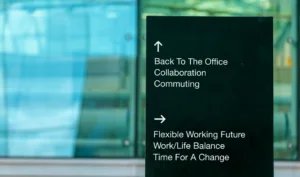
Implementing Asynchronous Video Communication in the Workplace
Video content is everywhere—from newsrooms and social media feeds to the bright lights of Times Square advertisements—and now it’s becoming a staple in the workplace.

Video content is everywhere—from newsrooms and social media feeds to the bright lights of Times Square advertisements—and now it’s becoming a staple in the workplace.

Remote work trends can vary depending on whom you ask, especially as return-to-office mandates continue across the U.S. A remote worker will likely say they’re

Dive deep into these four realities of Gen Z to boost hiring, engagement, and retention. This year the oldest members of Generation Z (born between

In traditional work settings, attracting the right talent at the right time through onsite recruitment is challenging enough. But now with the rise of remote

Managing a company has always been complicated. But the recent explosion of remote and hybrid work is making things infinitely more complex, especially when it

We publish a lot of articles at TalentCulture by terrific HR practitioners, innovators, and thought leaders. In fact, we’ve been sharing useful ideas from diverse

When the pandemic arrived in 2020, everyone’s definition of work changed in a heartbeat. Most people headed home, leaving their offices, cubicles, water coolers, and

For most of the last three years, millions of people clocked in at work from the comfort of home. Now, eager to return to a

Sponsored by Social Flowers What a difference three years can make! I’m sure that’s what many remote employees are thinking these days. Before the pandemic,

“Absence makes the heart grow fonder.” No doubt, you’ve heard this familiar quote. You may even have said it to encourage others who are separated

Running a business from home can be an exhilarating and highly rewarding experience. But remote business owners know that leading from a home office also

We don’t need research to tell us the future of work will be much different from pre-pandemic norms. But Covid isn’t the cause. Disruption was

Predicting the unexpected is a tricky process — especially in the world of digital innovation, where change and disruption are a way of life. But

When the pandemic suddenly forced millions of people to work remotely, employers weren’t sure what to do next. Because the transition was nearly instantaneous, this

Have you noticed that workforce engagement and motivation are slipping? You’re not the only one. In April, Gallup confirmed that U.S. workforce engagement declined from

In 2020, our most popular blog post discussed how leaders could move forward when Covid abruptly forced many of us to work from home. I

It’s not a stretch to say COVID changed everything—including the way working families think about childcare benefits. Before the pandemic, parents struggled with childcare challenges,

Friendships are an essential aspect of work life. But friendships among remote employees aren’t the same as relationships among people who spend time together in

Early in 2020, without warning, the pandemic made distributed teams a standard way of working for organizations all over the globe. Now, many employees have

There’s no doubt about it anymore—the workplace has shifted fundamentally. Now, according to Pew Research, almost 60% of employees are working from home at least

Gone are those days when people used to travel to their workplaces. According to a Pew Research report, about one-fifth of workers having the flexibility to

Working remotely is something that many of us have experienced during the pandemic. If you look at your social media feeds, you will notice multiple

We all know that hiring young talent can bring a lot of positives to any organization. Younger workers are digital natives, they tend to have

2021 turned out to be a year that introduced many new terms into the common vocabulary. One of the most popular terms – The Great

Think like a scientist: Do a test. Record your next video meeting of three or more people. Afterward, transcribe the recording. Then, with a printed